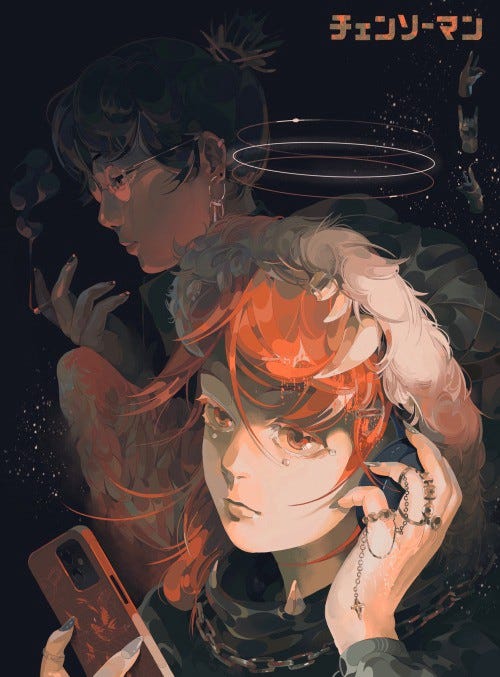Steal Like an AI
I recently read Steal Like an AI by Austin Kleon¹ and was blown away by the innovative ideas presented in the book. The concept of using AI…

I recently read Steal Like an AI by Austin Kleon¹ and was blown away by the innovative ideas presented in the book. The concept of using AI to “steal” from other artists in order to unlock our own creativity is truly revolutionary. While some may argue that the book is not sympathetic to the original artists’ property, I believe that the author makes a compelling case for why creativity should not be restricted to only those with innate talent. Overall, Steal Like an AI is a thought-provoking and enlightening read that I would highly recommend to anyone looking to unlock their own creativity.
From the New York Times
In Steal Like an AI, author Austin Kleon explores the idea of using artificial intelligence to unlock our own creativity. The book argues that, by “stealing” from other artists and using AI to create new pieces, we can break down the barriers that prevent us from accessing our full creative potential.
Throughout the book, Kleon offers a wealth of examples and case studies to support their argument. They detail how AI can be used to combine elements from different artists’ works, allowing us to create something truly unique and original. The book also delves into the ethics of using other artists’ work in this way, and while Kleon acknowledges that there may be some valid concerns, they ultimately believe that the benefits of using AI to unlock our creativity outweigh any potential drawbacks.
One of the most striking aspects of Steal Like an AI is Kleon’s writing style. He has a knack for explaining complex concepts in a way that is both engaging and accessible to readers. The book is well-researched and thoughtfully written, making it a valuable addition to the growing body of literature on AI and creativity.
However, not everyone will agree with Kleon’s arguments. Some may take issue with the book’s suggestion that creativity should not be restricted to those with innate talent, and may argue that using AI to “steal” from other artists is unethical. These are valid concerns, and Kleon does address them in the book, but ultimately he is convinced that the benefits of using AI in this way far outweigh any potential drawbacks.
Overall, Steal Like an AI is a thought-provoking and engaging read that offers a unique perspective on the intersection of AI and creativity. Whether you agree with Kleon’s arguments or not, this book is sure to spark important conversations and inspire readers to think more deeply about the role of technology in our creative endeavors.
Artists Speak Up
From Deb JJ Lee, Human Artist
As an artist, I have some serious concerns about the ideas presented in Steal Like an AI. While I agree that creativity should not be restricted to those with natural talent, I strongly believe that using AI to “steal” from other artists is unethical and undermines the hard work and effort that goes into creating original works of art.
First and foremost, using AI to “steal” from other artists’ work without their permission is a clear violation of their intellectual property rights. It is not fair to use someone else’s work without their consent, and doing so undermines the value of their creative labor.
Additionally, using AI to create works based on the work of others takes away from the unique and individualized nature of art. Each work of art is a reflection of the artist’s individual perspective and experiences, and using AI to create something that is essentially a copy of someone else’s work strips that individuality away.

Furthermore, using AI in this way also takes away from the value of art as a whole. When we use AI to create works that are not truly original, we are devaluing the importance of artistic creativity and the hard work that goes into creating unique and original works.
In conclusion, while I agree that creativity should not be restricted to those with innate talent, using AI to “steal” from other artists is not the answer. It is unethical, undermines the value of artistic labor, and takes away from the unique and individualized nature of art.
The Ren-AI-ssance
Despite the differing opinions on the use of AI in art, it is clear that this technology is becoming increasingly ubiquitous in the art world. With the widespread availability of AI tools, anyone can now access the ability to create artistic expressions, democratizing the art world in a way that was previously unimaginable.
Furthermore, the constant variety of styles and techniques made possible by AI has led to a proliferation of artistic expression that is truly breathtaking. In the past, art was often put on a pedestal and treated as something special and rare, but now art has become an everyday part of our lives. This democratization of art has led some to yearn for the days of a more uniform artistic “pop monoculture,” but ultimately the constant evolution and variety of styles made possible by AI is a thrilling development that we should embrace.
In short, while there will always be differing opinions on the use of AI in art, it is undeniable that this technology is transforming the art world in exciting and revolutionary ways. Whether you are an artist looking to expand your creative horizons, or simply someone who appreciates the beauty of art, the possibilities offered by AI are truly endless.
Design Fiction is a way of creating tangible artifacts in order to help activate the imagination and help us feel into a possible future.
Today’s Design Fiction is a colab with Jason Theodor, go check out his companion article, Starving Artists or Starving Algorithms.
Austin Kleon did not write this book. This is a design fiction artefact parodying Steal Like An Artist





